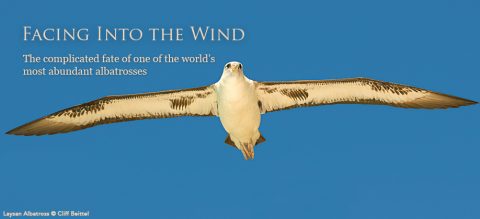View From Sapsucker Woods: Science and Art Meet at the Cornell Lab
By John W. Fitzpatrick
From the Summer 2014 issue of Living Bird magazine.
July 15, 2014
Science and art are uniquely human endeavors. The mathematician-philosopher Jacob Bronowski held that these two seemingly opposite enterprises actually share a common origin, our innate drive to be curious. Many animals are curious, because it helps them learn important details about life such as what to eat, what to fear, and where to hide. For the most part, though, non-human animals learn through individual trial and error. Bronowski observed that the evolution of complex language inspired humans to begin exchanging curiosities, experiences, and knowledge about the world with one another, and eventually across cultures. Thus was born the duality of science and art, both driven by our insatiable curiosity about the world around us. Scientific methods organize and codify our explorations. Artistic methods express our curiosities and “data of the senses” through less codified frameworks. Both endeavors advance through experimentation and bold vision, but also through error and failure. Indeed, science seeks truth by explicitly embracing the vulnerability of ideas and the inevitability of error. Art advances along remarkably parallel tracks of fearless innovation. Their roots lie in what Bronowski called our capacity for “speculative imagination.”
Ornithologists have long revered the mutuality of science and art. Visionaries such as Catesby, Wilson, Audubon, and Gould made fundamental scientific contributions while exploring uncharted artistic space. The world’s great natural history museums interwove artists with scientists to create dioramas that were both visually and scientifically monumental. Pioneering painters such as Liljefors, Jaques, Sutton, and Peterson graced the pages of influential science books as well as the walls of museums.
The Cornell Lab has mingled art with science for decades. Our founder, Arthur Allen, pioneered color photography, and the original Living Bird was a scientific annual featuring paintings and verse as well as technical papers. Today the walls of our building are adorned with works by dozens of artists, varying from the realism of Louis Agassiz Fuertes to the joyful abstractions of Charlie Harper. Launched in 2010, our Bartels Internship allows the Lab to host a remarkable series of early-career artists who challenge us to explore both sides of our brain. In 2013, local sculptor Todd McGrain became our first official artist-in-residence (see www.lostbirdproject.org).
In anticipation of our 2015 centennial, I am thrilled to announce three monumental art installations at the Lab. James Prosek’s Wall of Silhouettes pays homage to the role of bird watching in ornithology. Inspired by Roger Tory Peterson’s iconic endpapers from A Field Guide to the Birds, this bold mural spans the full length of the north wall in the Lab’s visitor center. The Sound Ring is an elegant, interactive audio-sculptural component of renowned sculptor Maya Lin’s What Is Missing? memorial to threatened and extinct species around the world. This gift from the sculptor honors the Macaulay Library’s ongoing participation in her inspiring project (www.whatismissing.net). Finally, Jane Kim’s Evolution and Diversity of Birds mural will provide a visual journey through 375 million years of evolution, beginning with ancient marine life and ending with a magnificent and colorful celebration of modern birds. This mural will span 4,000 square feet on the south wall of the visitor center, and will take the artist more than a year to paint. By this time next year, Cornell Lab of Ornithology visitors will gaze in awe at the grand union of science and art within our walls.

All About Birds
is a free resource
Available for everyone,
funded by donors like you
American Kestrel by Blair Dudeck / Macaulay Library



